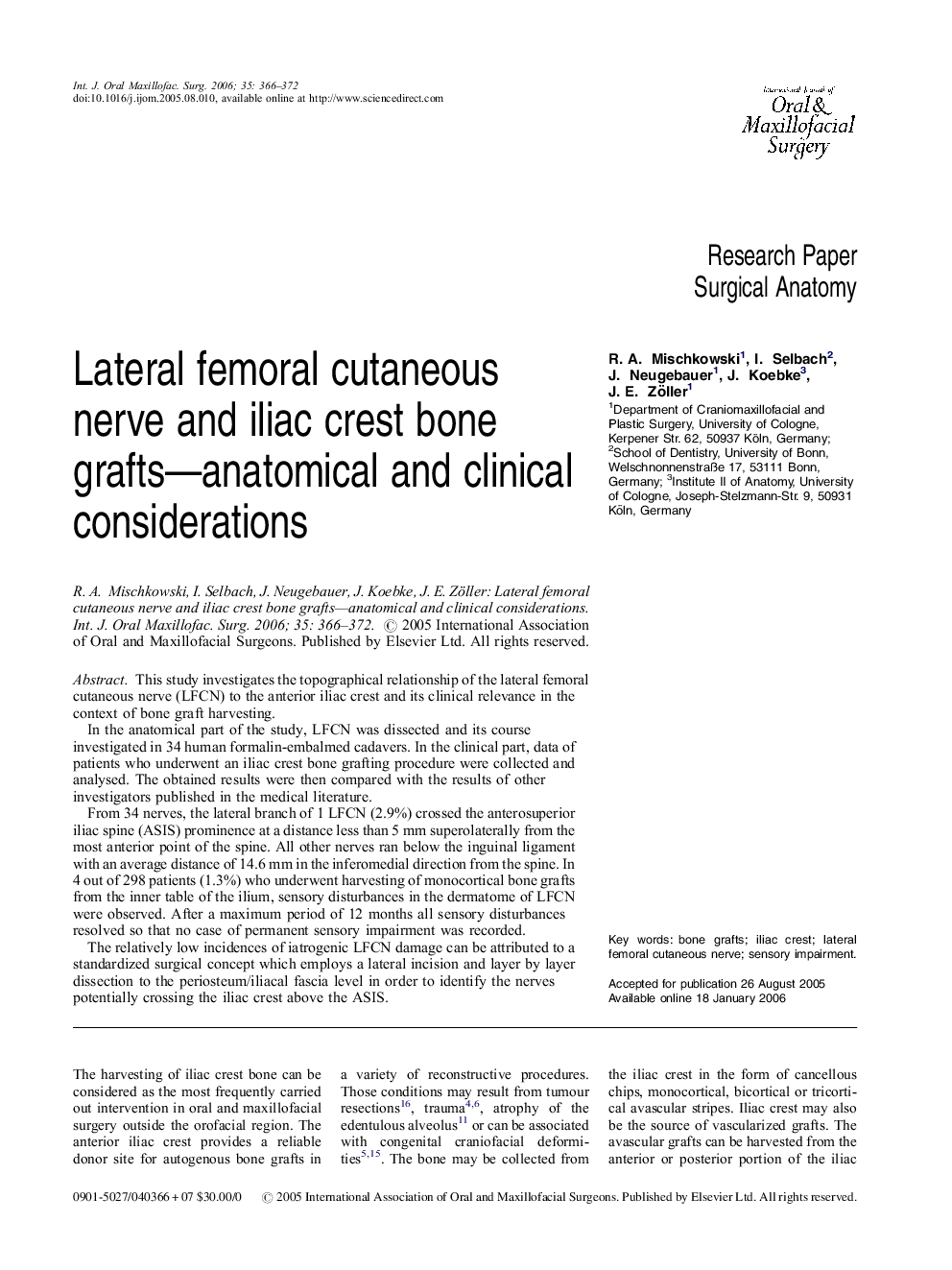| Article ID | Journal | Published Year | Pages | File Type |
|---|---|---|---|---|
| 3135168 | International Journal of Oral and Maxillofacial Surgery | 2006 | 7 Pages |
This study investigates the topographical relationship of the lateral femoral cutaneous nerve (LFCN) to the anterior iliac crest and its clinical relevance in the context of bone graft harvesting.In the anatomical part of the study, LFCN was dissected and its course investigated in 34 human formalin-embalmed cadavers. In the clinical part, data of patients who underwent an iliac crest bone grafting procedure were collected and analysed. The obtained results were then compared with the results of other investigators published in the medical literature.From 34 nerves, the lateral branch of 1 LFCN (2.9%) crossed the anterosuperior iliac spine (ASIS) prominence at a distance less than 5 mm superolaterally from the most anterior point of the spine. All other nerves ran below the inguinal ligament with an average distance of 14.6 mm in the inferomedial direction from the spine. In 4 out of 298 patients (1.3%) who underwent harvesting of monocortical bone grafts from the inner table of the ilium, sensory disturbances in the dermatome of LFCN were observed. After a maximum period of 12 months all sensory disturbances resolved so that no case of permanent sensory impairment was recorded.The relatively low incidences of iatrogenic LFCN damage can be attributed to a standardized surgical concept which employs a lateral incision and layer by layer dissection to the periosteum/iliacal fascia level in order to identify the nerves potentially crossing the iliac crest above the ASIS.
